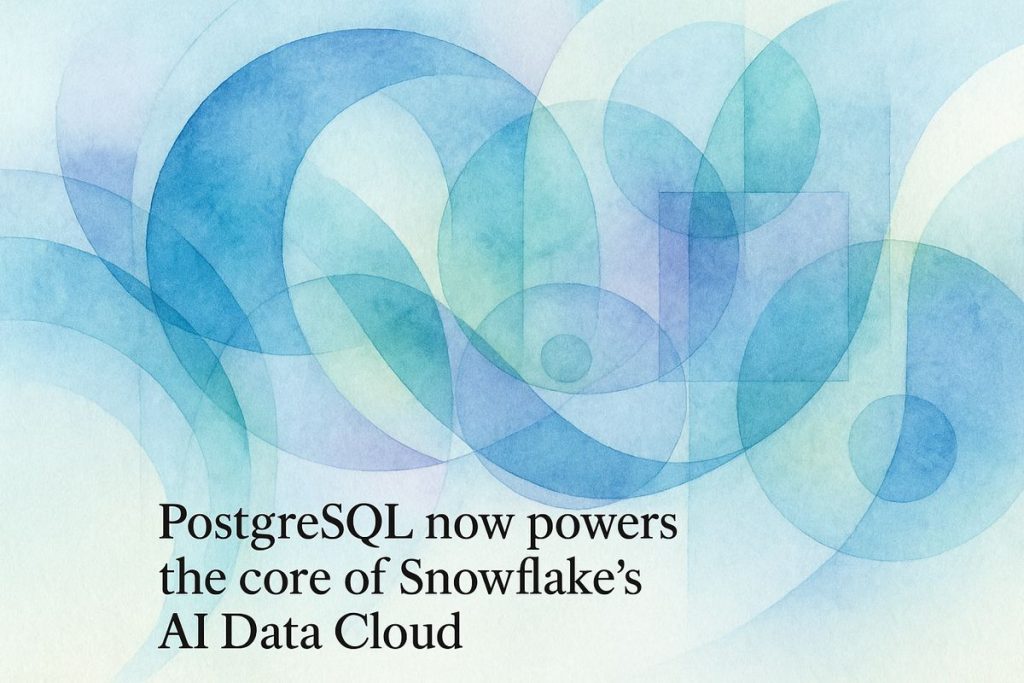Snowflake bought Crunchy Data for $250 million to boost its cloud with powerful, secure PostgreSQL—the kind trusted by big businesses and the government. This big move lets Snowflake handle not just analytics, but also everyday transactions and advanced AI work, helping it better compete with rivals like Databricks. Customers get tighter security and easier tools, while developers can enjoy the speed and power of both platforms together. This deal could change how companies use databases in the cloud, but it also means fewer independent choices for businesses in the future.
Why did Snowflake acquire Crunchy Data, and what does it mean for cloud and AI?
Snowflake acquired Crunchy Data for $250 million to strengthen its cloud platform with enterprise-grade, open-source PostgreSQL capabilities. This move enables Snowflake to handle transactional and AI-driven workloads, offer enhanced security for regulated industries, and better compete with rivals like Databricks in the evolving data cloud landscape.
I. A $250 Million Cloudquake
So, in June 2025, as I sipped my over-extracted pour-over (tasted like liquid charcoal—ugh), the news crawled across my screen: Snowflake just acquired Crunchy Data for $250 million. That’s not chump change, and neither is the move itself. It’s less a gentle merger and more a tectonic shift for the data cloud landscape—a bit like watching two titans play chess with entire city blocks. You could almost hear the distant clang of database engineers dropping their mugs in surprise.
But why Crunchy? And why now? Crunchy Data, headquartered in Charleston since 2012, wasn’t just any Postgres shop. They’d become the go-to for industrial-strength, open-source PostgreSQL—think hyperspectral precision, not generic, beige database blandness. Government agencies like the Department of Homeland Security, plus big-league clients like UPS, SAS Institute, and Moneytree, relied on Crunchy’s compliance-tuned, ironclad offerings. When I first demoed Crunchy Bridge, their managed Postgres cloud, the UI reminded me of a palimpsest—layers of clarity over years of hard-won lessons. Not that I always got it right (ask me about the time I accidentally spun up an unencrypted test instance—yikes), but Crunchy’s approach made recovery a breeze.
The $250 million acquisition wasn’t just a headline grabber; it was a signal flare. The battle for AI and cloud infrastructure supremacy had officially entered its next, more operatic act. What happens next? Let’s dig in.
II. Why Snowflake Needed Crunchy Data (And How Databricks Set the Stage)
Here’s the thing: Snowflake, for all its prowess in data warehousing and analytics, had a glaring Achilles’ heel—operational and transactional workloads. Until now, transactional data was Snowflake’s white whale. Enter Crunchy Data: their deep PostgreSQL chops now let Snowflake build what they’re calling “Snowflake Postgres.” Imagine an enterprise-grade PostgreSQL, snapped into Snowflake’s platform, all tuned for AI agentic applications. That’s not just a technical upgrade; it’s a leap into a new galaxy for developers who want the open-source familiarity of Postgres without sacrificing scale or security. I had to stop and ask myself—how many AI startups will now pivot their stack just to ride this new wave?
Of course, the timing is no accident. Just months earlier, Databricks shelled out a cool $1 billion for Neon, another Postgres-centric upstart. The chessboard’s shifting again, and Snowflake’s not letting Databricks snag all the marbles. In this arena, it’s not about incremental features; it’s about owning the very substrate of next-gen cloud and AI. Even the Wall Street Journal had to admit: this is the new arms race.
But—let’s not forget the human side. One of Crunchy’s engineers once told me their first big government contract felt like “getting the keys to Fort Knox…and realizing you’re locked in for the night.” That’s the kind of institutional knowledge Snowflake is betting on.
III. What Changes for Customers? (Spoiler: Quite a Lot)
If you’re in pharma, the federal sector, or life sciences and you’ve lost sleep over compliance audits, this deal should smell like fresh-cut pine—sharp, reassuring, with a trace of adrenaline. Crunchy’s legendary for its security-first ethos and a track record with agencies where a single misstep can mean Congressional hearings, not just a slap on the wrist. By integrating those protocols, Snowflake can now extend its white-glove service to clients with the strictest regulatory needs. No more patchwork solutions or midnight workarounds.
Developers, too, stand to gain. Crunchy’s serverless Postgres magic—Crunchy Bridge—makes deployments so frictionless it’s almost eerie. I remember spinning up a cluster in under a minute, half-convinced I’d missed a step. With Snowflake absorbing this, devs get a Postgres that’s both open-source nimble and enterprise-armored. Think of it as a Swiss Army knife, but with an actual laser pointer. (SAS Institute and Moneytree, you’re probably already plotting out your roadmaps.)
And let’s not sideline the revenue angle. Crunchy’s roster of blue-chip and government clients now plugs directly into Snowflake’s ecosystem, turbo-charging both its reach and its requirements. Will this push Snowflake to innovate faster, or bog it down with red tape? Only time—and a few caffeine-fueled all-nighters—will tell.
IV. The Broader Zeitgeist: Consolidation, Competition, and the Future of Postgres
So, what’s the pattern here? In case you missed it, the market’s been on a spree—Databricks grabbed Neon, now Snowflake has Crunchy. Serverless Postgres is the new gold rush. As large enterprises migrate mission-critical workloads to the cloud, managed Postgres platforms have become crown jewels. It’s consolidation, yes, but also a sign that hyperscale cloud and AI vendors are betting big on database infrastructure as the bedrock of the next computing paradigm. (AIM Research and PYMNTS have been tracking these moves like hawks.)
Yet, there’s a shadow here. Fewer independent managed Postgres providers could mean less healthy competition. A vibrant open-source ecosystem risks being replaced by a monoculture—or, worse, an ossified one. As someone who once picked Postgres
